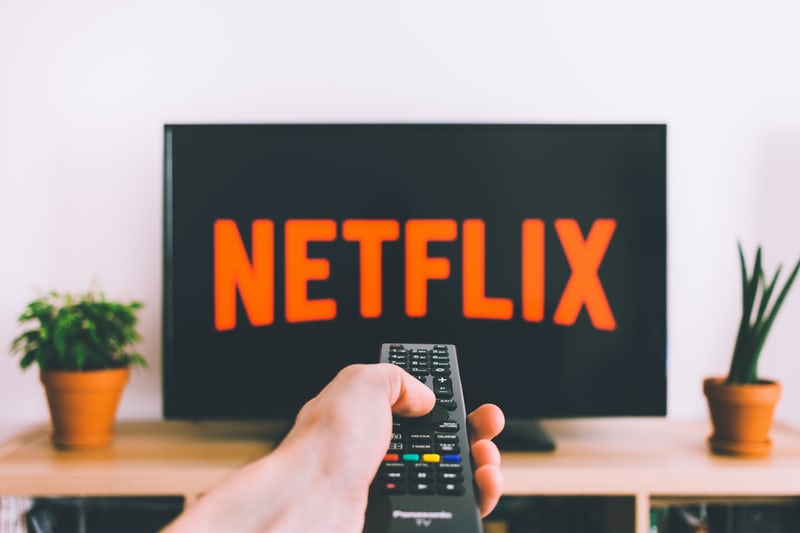It’s time to be honest with yourself.
Why do you really have that Disney + subscription?
Don’t worry. I’m not bashing you if you don’t have kids.
I’m just asking if you have Disney+ only to watch ToyStory 3 in HD?
Is that all?
Now, don’t get me wrong. Toy Story is a classic but is $8 a month or $80 a year worth it for just that?
Sure, $8 won’t make a huge dent in your wallet considering a movie ticket these days is roughly $30 not including popcorn but money is money, no matter how much of a deal you are getting it’s still spent!
Americans are spending more on their subscription services than the service/provider itself and the pandemic has only exacerbated that problem.
71% of Americans have at least 1 subscription and the average consumer watches 4 TV services.
With too many choices and an abundance of options, consumers feel satisfied joining all yet end up using 20% of what’s provided.
FOMO is Real
$8 might not seem like a lot but over time it can easily give you back x amount of time, a better use of that noggin and a few more dollars to stash into your portfolio instead.
If you pay a monthly subscription, congratulations, you are part of the 100 million Americans and billions across the globe who are overblown with subscriptions that they don’t use for majority of the month that are cutting into their paycheck without noticing it.
Even though it’s a couple dollars, overtime it adds up especially for those working minimum wage or earning W2 income paying most of it in income and sales tax. I believe to start paying for subscriptions, presumably for discretionary items like Netflix, ButcherBox and even Amazon Prime, you need to be making 3–5x more than minimum wage ($13 per hour) to afford it. Otherwise, it’s simply not worth it to pay for something you don’t need or have time for even when you think you do need it.

Crossing the Line
We all have the freedom to make our own decisions regarding our finances which makes personal finance dangerous and seemingly complex. You can’t force someone not to have Netflix while you have Hulu, unless you have a compelling reason the selection is better, because we all have different financial circumstances.
Everyone is selective about what they choose to share.
Just because someone earns an identical salary as you do doesn’t mean they are worth the same. From living expenses to their daily habits, marital status, luck, sneaky bonus, retirement match, inheritance, etc. there are countless factors that determine someone’s net worth and what they choose to spend.
It’s all psychology just like economics studying the way consumers buy goods. Yet a majority of consumers determine what to pay for based on what others do which gets them into dark holes a.k.a credit card debt. Just like with the market, equating emotions to your actions will send you into the red.
Following others and having constant FOMO lead consumers to end up paying for subscriptions when they don’t need them robbing more money out of their pockets when they could buy those items on their own for less.
Majority of us, unless our parents sat down with us to discuss our financial circumstance and plan for the future before graduation, never learned about managing credit to debt until adulthood and at that point in time, it’s already too late.
These days, as inflation fears are rising, this cuts into wages as they are staying stagnant. As tuition, healthcare, medical expenses, gas, food prices and don’t forget subscriptions are all rising, paychecks are not budging.
With the proposal to raise minimum wage, this could lead to millions of layoffs as employers cannot afford to pay their staff at a new high rate. This ushers in struggling graduates especially in expensive cities of New York and San Francisco having to deal with the stressors of renting a place and growing up on their own with no mom and dad bank on the side.
Finance stress couldn’t be higher when you have no education or concept of money.

Subscription Scoop
Subscriptions came about when everything shifted to online. They could be a blessing or a curse.
A blessing for a family of 5 needing to buy things in bulk and not wanting to take 6 trips to the grocery store a week.
A curse to the hip Millennial who just graduated from NYU with $80k in student loan debt wanting to try out a new assortment of vegan lip balms every month, jewelry and or fresh organic paleo zero carb or delicious food.
The list goes on and on for what can be delivered to your door and it most likely isn’t helping you.
Remember when you needed milk you would go to the physical store?
Everything is programmed now for next Tuesday, you are making your life too easy you are wasting too much.
In the early 2000s, Amazon rapidly turned into the online version of Walmart eventually copying their entire business model to offer everything imaginable besides books. They revolutionized the way consumers shop for everyday low prices with a few clicks of a button.
There was no such thing as subscribing to newsletters to Prime in the 90’s pre the dot-com bubble and although I was born in 2000, I have a feeling people saved more and wasted less, even if they wasted a trip to the store.
When the internet exploded and Amazon invented Prime, adopting the slogan that all advertisers would soon use and manufacture: more for less, our bank accounts started taking a hit.
What causes subscription overload?
-FOMO
-Perception of saving money and time
-New wave of consumerism online
Just like with investing during the pandemic, with stimulus checks pumped into Americans hands, those who were most likely laid off and bored, migrated to investing.
80%+ of retail investors have no idea what they are doing. They don’t base their trades off of fundamentals or technicals, rather behaviors and RoaringKitty.
Don’t get me wrong. Learning how to invest or in this case, gamble is certainly not a bad move and definitely a better decision than watching “Friends” re-runs on Netflix or scrolling social media all day during quarantine, but as with everything moderation is key especially with subscriptions.
There was no moderation and diligence which lead to the massive short squeeze, when stocks rise in price because investors are selling off at rapid rates which lead Robinhood to haunt trading due to payment order flow. Newly minted investors, mostly GenZers and Millennials wanted to be a part of the delusional hype betting on GameStop, AMC and Blackberry, dead companies simply becuase it was the “hot” thing to do at the start of 2021.
When the “hot” tech internet stocks of the 2000s came rolling around, setting groundbreaking valuations on their IPO debut, institutional and individual investors, not as many as now though, were clamoring to own unprofitable stocks that didn’t make sense to them which eventually lead to a sell-off and the dot-com crash of 2000.
Although tech and the stock market has recovered since then marking a 8 yea bull run until the next recession the Housing Crisis in ’08 which happened in a similar way just with homes, I sense subscriptions are going in this direction as well.
Who knows if Peloton will be as popular as it was during the pandemic or Glossier will always appeal to consumers. Probably not as people evolve and things get more pricey. What younger generations need to become more aware of are these marketing manipulation tactics exploiting their behavior, data and how they shop.
There’s no free speech or say in buying something anymore. Once you buy something from a retailer, they locked up your address forever and you have to either dig through your spam to unsubscribe, call customer service or convince yourself they are bothering you for a good reason: to subscribe to something you don’t need!

Future
I predict the future of subscriptions will only skyrocket and become more dangerous. When technology through AI recognition and algorithms to gather data about our shopping preferences advances, so will our spending in the wrong direction.
Are we already hit with subscription fatigue?
For sure so your best bet is to get on to it. Unless they are truly serving you, no need to have that Disney + no matter how many times you love all the Toy Stories. Do yourself a favor and buy the movie at a flat rate for once instead.
As we’ve witnessed at the start of May the CPI’s index’s release of an 8% increase in spending in the U.S., more than economists anticipated, that signaled the Fed to watch out for record spending, demand and not enough supply, rising prices leading to possible inflationary concerns and frivolous consumers!
All I’m saying is to be more careful and prepared about what you need. The last thing you want to do is erase all your hard earned pent up savings and possibly investments you’ve generated throughout the pandemic and spend it on Stitch Fix when you’ve adopted to working in your sweatpants all year and doing just fine.
Just because someone else has it doesn’t mean you have it. Yes, it’s easier said than done but just realize it.
As we head back to normal life, with the tourism, leisure, hospitality and travel industries making a swifter comeback than analysts predicted shy of pre-pandemic levels, people are willing to spend more for experiencing life again which means overestimating what they need.
All I ask for you is to keep an eye out for what you plan on doing. If you want to take that post-covid trip to Hawaii go ahead but that doesn’t mean you need to all of a sudden get a TSA pre-check renewal every year and Delta membership to earn points on flying when you know you only flew less than 5x a year pre-covid.
Be realistic and know that everything you DON’T have looks enticing.
Oh btw, feel free to subscribe here. My content will always be free.

